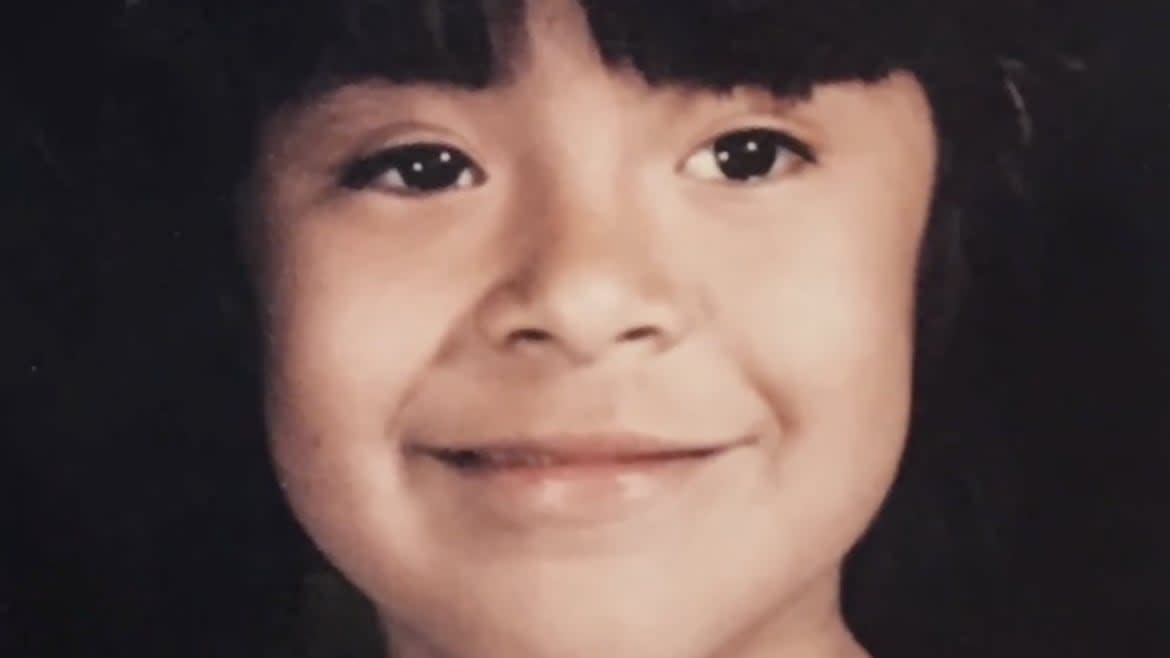It Took 28 Years, but Cops Solved This 10-Year-Old’s Rape and Murder

The rape and murder of a 10-year-old California girl who was abducted from a swap meet haunted detectives and her family for 28 years.
But investigators announced on Thursday that through genealogical DNA sleuthing, they have finally identified a suspect in the Angelica Ramirez case.
To the dismay of Angelica’s family, the alleged killer, Romiro Villegas, died in Mexico in 2014 and will never face justice.
“We are not putting handcuffs on a suspect but we are closing a case,” Tulare County Sheriff Mike Boudreaux said at a press conference, with Angelica’s family standing behind him.
The victim’s sister, Micaela, tearfully thanked police who kept up the hunt for the killer through decades of DNA advancement.
“At least now we have a face to the killer,” she said. “We don’t have to worry about this person being out there, doing this to someone else.”
Angelica was kidnapped on March 3, 1994, while watching her younger siblings at her parents’ booth at a swap meet in Visalia. She stepped away to use the restroom and vanished.
Within a couple of hours, investigators had launched a massive search for the child. “I remember that day because I also was assigned the search and I remember that desperate feeling we had in trying to locate this young girl,” Boudreaux said.
Two days later, a farm laborer found her body in a canal, and the missing-persons case became a homicide investigation.
“Since that day, the Tulare County Sheriff’s Office has had detectives assigned to this case,” Boudreaux said.
The sheriff said that over the course of almost three decades, investigators followed up thousands of leads, looked into hundreds of persons of interest, grilled hundreds of potential suspects, and conducted nearly 1,000 interviews with anyone who might know something.
They did have DNA collected from the scene and submitted it to databases 100 times without a hit, even as testing grew more and more sophisticated over the years.
In February, after consulting with the FBI forensic genealogy unit, the sheriff’s office contracted with a private lab that created a genetic profile of the killer.
That was then uploaded to public databases that people use to trace their family trees and in March they got a match.
“We knew we were within two generations of where the suspect fell in that family tree,” Sgt. Joshua Lowry said.
Further comparison between the relatives in that family and the suspect’s DNA led police to zero in on five male siblings living in Southern California. Four submitted DNA and were ruled out as suspects.
The fifth, Romiro Villegas, could not be tested. After a drug-trafficking arrest in 2002, he was deported to Mexico, where he died of a lung ailment in 2014.
“DNA was never collected from him,” Boudreaux said.
The sheriff said he had spent two days with Angelica’s family, walking them through the investigation and explaining why they were sure Villegas was the man who sexually assaulted and strangled her.
“If there is any solace, we know that he is dead and I think that he’s in a special place and certain place,” Boudreaux said. “But we know Angelica is in heaven.”
Got a tip? Send it to The Daily Beast here
Get the Daily Beast's biggest scoops and scandals delivered right to your inbox. Sign up now.
Stay informed and gain unlimited access to the Daily Beast's unmatched reporting. Subscribe now.

 Yahoo Movies
Yahoo Movies 
